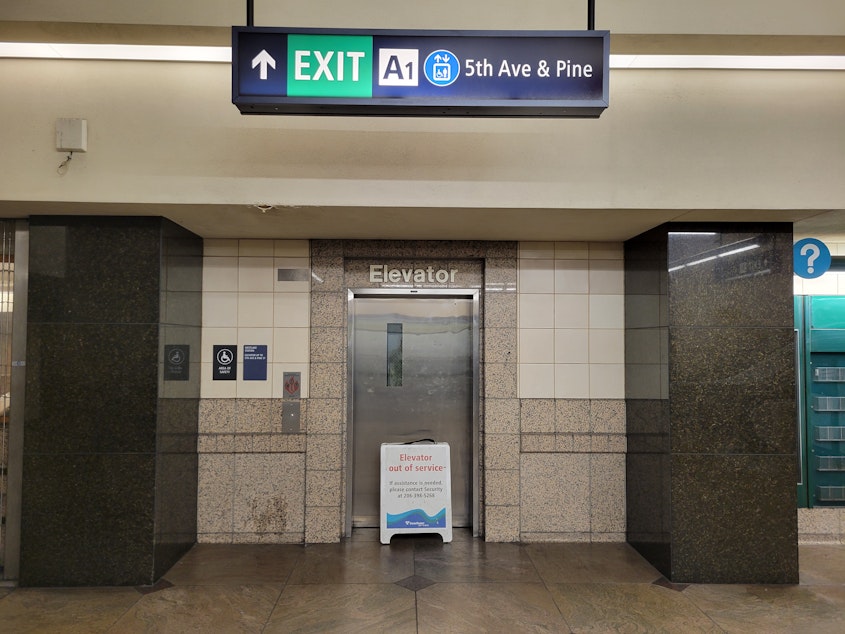Hear It Again: Transportation Woes

The Soundside team is taking some time off this week, and while we’re away, we’re revisiting some of the episodes that made us think about the way we move throughout our region.
We’ll explore why the U.S. is one of the only wealthy countries to be moving in the wrong direction on traffic deaths.
Plus, those escalators in the light rail stations, they’re still giving us grief!
Last month, The New York Times highlighted that America has an exceptional problem: While other developed countries have made their roads safer, here in the U.S., our streets have seen a rising death toll.
The issue is even more apparent right here in our own backyard. According to Washington state's Traffic Safety Commission, over the last two years, Washington has had one of the worst surges of traffic deaths of any state in the country.
We reached out to two folks steeped in the issue of transit and safety, to get their perspectives on this problem.
Soundside was joined by senior editor of The Urbanist, Ryan Packer, along with Yonah Freemark, a researcher at the Urban Institute in Washington, D.C., to discuss this sharp rise in traffic deaths.
Sponsored
After our discussion with Packer & Freemark, we moved from cars to the light rail.
Riding the light rail is a great alternative to driving in Seattle. You can get to the airport from Capitol Hill in less than an hour, and for less than three bucks.
But, more often than not, if you use a mobility aid, like a wheelchair, getting into the station may be more frustrating than it’s worth. Back in June, we hopped on the train to find out why.
Soundside was joined by Dr. Anat Caspi of the University of Washington's Taksar Center for Accessible Technology, Kenny Salvini of the Here & Now Project, and Sound Transit's deputy director of vertical conveyances, John Carini.
Sponsored
And since that episode aired, we reached out to Sound Transit to check on the progress of the pilot program that Deputy Director Carini discussed with us in June.
The department considers the pilot to be a success. It says the 20 sensors currently in use provide real-time data and quick notification when something goes wrong. The department says it plans to begin installing the sensors on the remaining elevators and escalators in 2023.
You can listen to our entire episode by clicking on the audio above.







